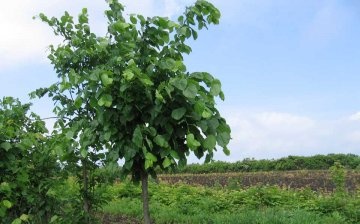Large-leaved linden Tilia platyphyllos scop
Large-leaved linden in its natural environment is found in the forests of the Caucasus, Ukraine, in southern and central Europe. Due to its winter hardiness, as a park and alley plant, it is distributed much farther north. Compared to the usual small-leaved, large-leaved linden is more stable and durable, the average life of a tree is 300-400 years, there are long-lived specimens, whose age reaches 1200 years.
Adults have a lush, wide-pyramidal crown, a powerful trunk, the bark of lindens is thick, cracking. Young trees are reddish-brown, fluffy or bare, grow rather quickly. Linden is notable for the fact that it enriches the surrounding soil with useful substances. This property is endowed with linden by its foliage, which contains a large amount of calcium.
The tree got its name for its huge leaves, which can reach 15cm in length and 8cm in width. In natural habitat, linden blooms in the 20th year of life, in artificial plantations only after 30 years. Flowering begins in July, when yellow, fragrant flowers bloom on the branches, up to 5 pieces in one inflorescence. After flowering ends, fruits appear on the linden in the form of fluffy nuts with a fairly dense shell.
Linden flowers are a medicinal raw material that is harvested in the first four days of flowering, after which they are dried and crushed. The linden blossom should be stored in tightly sealed jars, since with any change in humidity, the workpieces lose their healing properties.



